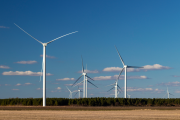The contribution of renewable power to total installed capacity in the US is expected to double from 15 per cent in 2018 to 30 per cent by 2030, reaching a total of 442.8 gigawatt (GW).

Representing a compound annual growth rate (CAGR) of 7.3 per cent, this projection can be attributed to more states adopting and updating renewable energy policies, as well as imposed emission taxes increasing the cost of fossil fuel power generation, according to GlobalData.
Energy utilities in the US are also in favour of switching to renewable power as they must comply with the state renewable energy targets.
GlobalData’s latest report, ‘US Power Market Outlook to 2030, Update 2019 – Market Trends, Regulations and Competitive Landscape’, reveals that the share of coal-based capacity will decline from 27.2 per cent in 2018 to 13.5 per cent in 2030, as it is replaced by renewable energy, storage projects and stable gas-based generation in the near future.
Arkapal Sil, power industry analyst at GlobalData, said: “During 2019-2030, offshore wind capacity is set to see the largest growth rate among renewables, reaching 11.7GW from 30 megawatt (MW) at 72 per cent CAGR, while solar photovoltaic (PV) capacity is expected to reach 220GW from 75.3GW, growing at 10 per cent CAGR.”
The onshore wind segment, which registered a growth of 22 per cent CAGR during 2000-2018 (reaching 96.3GW), will witness a steady growth of 5 per cent CAGR over the forecast period to reach 185.5GW in 2030 and account for 12 per cent of overall generation mix compared to eight per cent in 2018.
Sil added: “Biopower, geothermal and solar thermal segments are expected to jointly grow at an average of three per cent CAGR over the forecast period. Increased renewable capacity addition will open up new markets for wind turbines, modules for solar plants and associated equipment required for transmitting the generated power to the grid.”


